MARIANI’SVirtual
Gourmet
May 5, 2013
NEWSLETTER
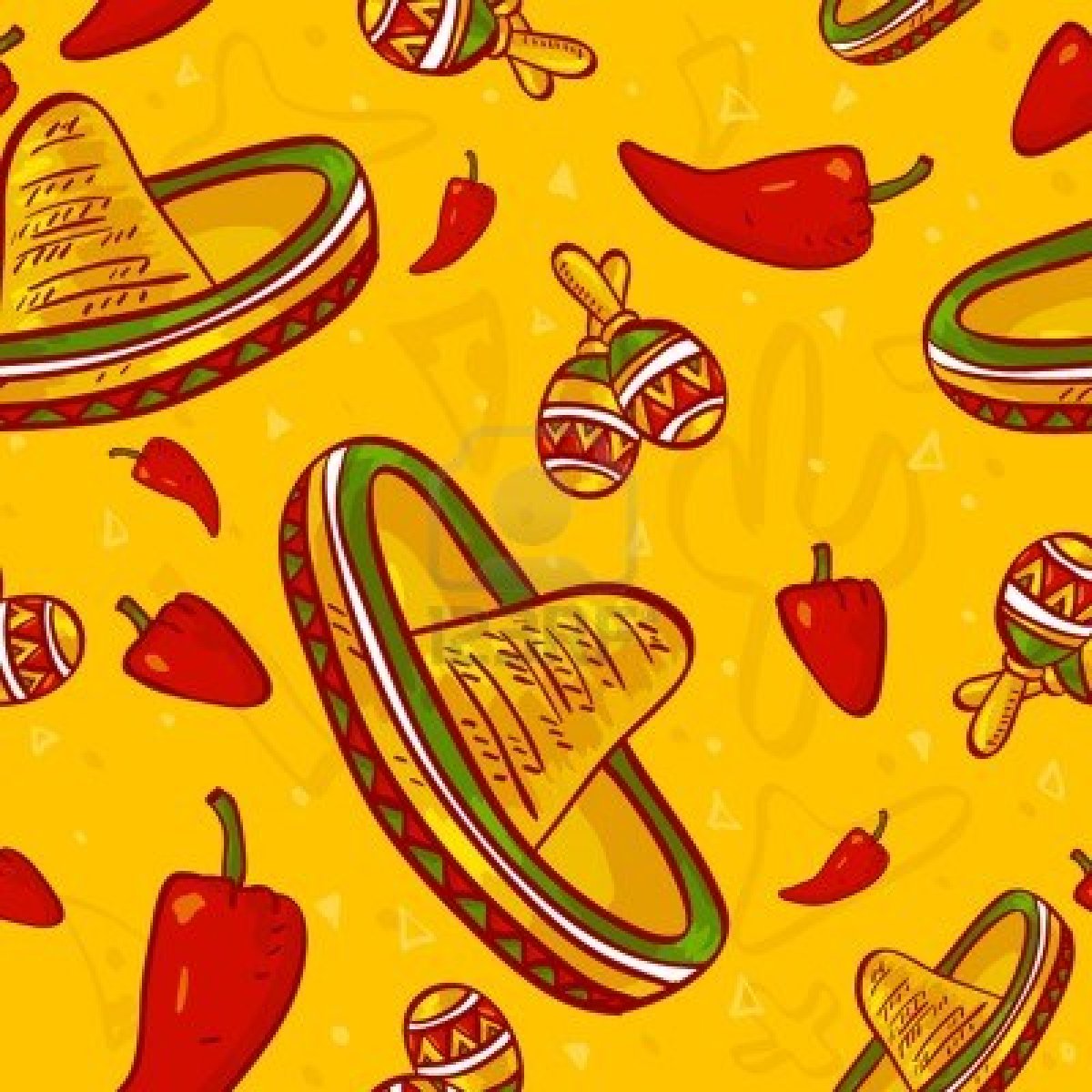
CINCO DE MAYO,
Mexican Independence Day
Oilcloth tablecloth
THIS WEEK
Buenos Aires,
Part One
By John
Mariani
NEW YORK CORNER
Junoon
by John Mariani
NOTES FROM THE SPIRITS LOCKER
THE NEW RYE WHISKEYS
by John Mariani
❖❖❖
Part One
by John Mariani
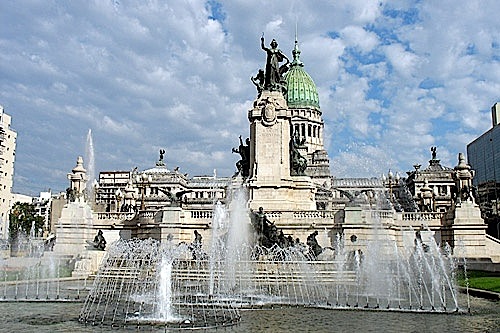
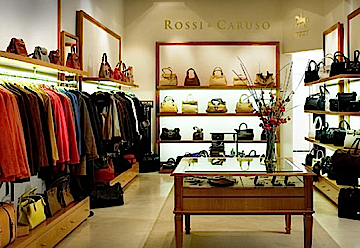 If there really is such a
thing as a “hot” new city, Buenos Aires holds a top
spot right now, not only for its classic beauty, its
vibrant waterfront teeming with restaurants and bars,
and its amazing, youthful vitality, but for the
fact that, after a critical devaluation of the peso,
it is one of the cheapest cities on Earth for a
foreigner to enjoy: the US dollar now buys you
at least 5 pesos and you can (ahem) get even more in
some quarters. By the same token, prices rose during
the boom years that preceded the current downturn, so
that the buys on leather goods are not what they once
were. Nevertheless, even the top stores, like Rossi &
Caruso (left),
are very happy to take U.S. dollars and give up to a
30 percent discount for them.
If there really is such a
thing as a “hot” new city, Buenos Aires holds a top
spot right now, not only for its classic beauty, its
vibrant waterfront teeming with restaurants and bars,
and its amazing, youthful vitality, but for the
fact that, after a critical devaluation of the peso,
it is one of the cheapest cities on Earth for a
foreigner to enjoy: the US dollar now buys you
at least 5 pesos and you can (ahem) get even more in
some quarters. By the same token, prices rose during
the boom years that preceded the current downturn, so
that the buys on leather goods are not what they once
were. Nevertheless, even the top stores, like Rossi &
Caruso (left),
are very happy to take U.S. dollars and give up to a
30 percent discount for them.
And you'll need a good pair of shoes, because
BA is very much a walking city, from the fashionable
streets of Recoleta to the increasingly cool--and now
expensive--neighborhood unofficially called
"Hollywood" within the Palermo District. The
name has stuck because this is where in the last
decade, many of Argentina's movie and theater crowd
have chosen to live, so it is packed with boutiques,
bistros, cafés, and nightclubs called boliches.
La Boca is the old port district; Puerto Madero the
docklands now developed with skyscrapers and condos;
Retiro is famous for its Art Nouveau architecture; and
San Telmo (below),
a very old, fairly well-preserved neighborhood with a
large Italian population. 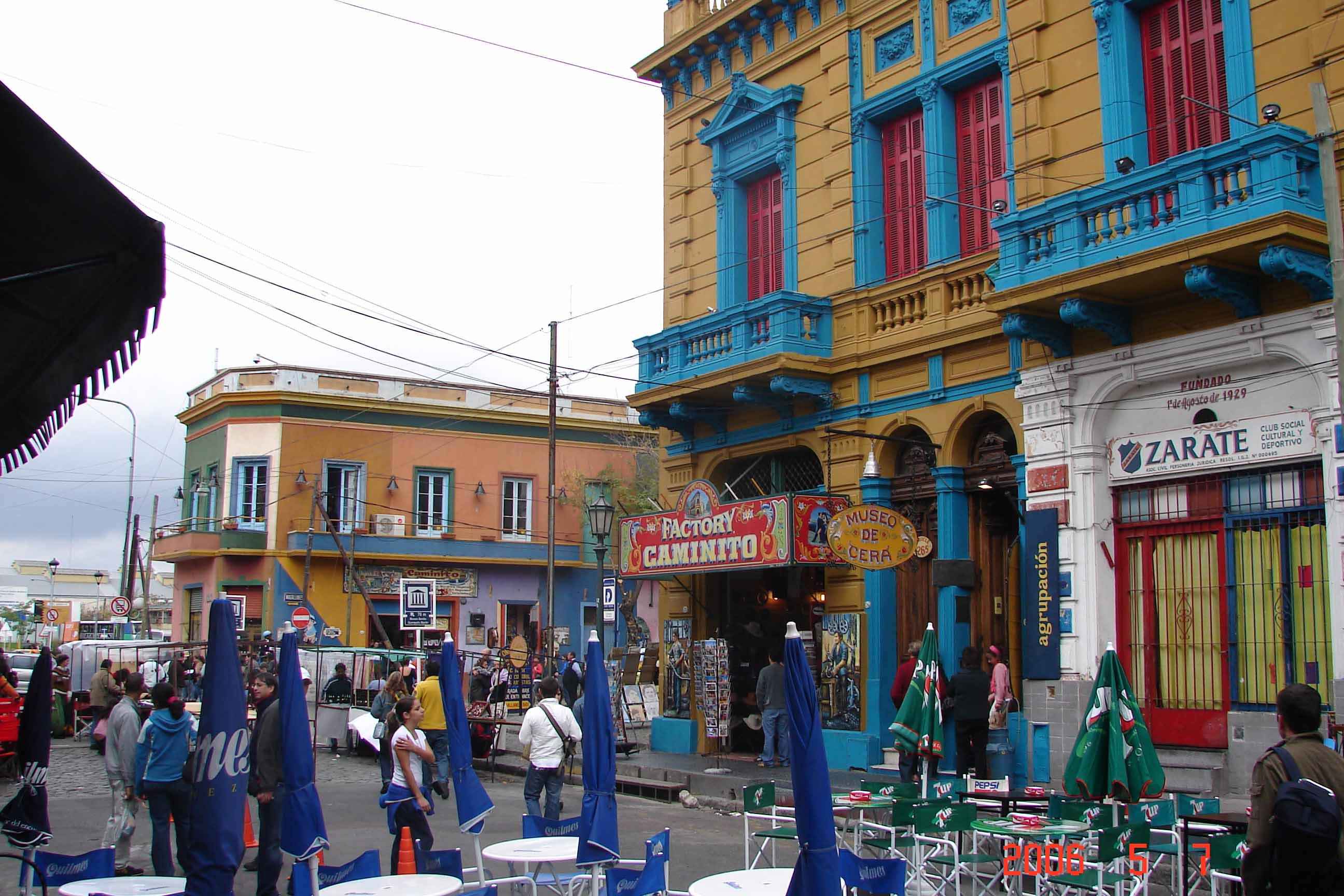
The city,
founded by the Spanish, dates to 1580, and it proudly
regards itself as righteously autonomous, now with
about 3 million people, and despite a boom and bust
Argentine economy that waxes and wanes every nine
years or so, the quality of life among Porteños
is among the highest in South America, whose citizens
have always regarded the Argentinians, whose
population is enriched with Italians, Germans, and
other Europeans, who arrived between 1900 and
1946, as an annoying uppity people. And, now
that the residents of the city can claim a new Pope,
Francis I, who was one of them, so the bragging rights
have increased accordingly. You will also find that
the Porteños look more like those Europeans
than people anywhere else in Latin America; and you
have to get into the poorer districts or outskirts
before you see the features and complexions of native
Americans in the people. There are very few blacks in
BA.
 This is not the place to get into a
discussion of Argentina's and Buenos Aires' political
history, which has had its share of brutalities,
numerous military dictatorships, plenty of bombings,
and the embarrassing defeat in the Falklands War. But
it should be mentioned that the far right supporters'
fevered affection for Eva Perón, is still
palpable in BA, and her image still stands out on the
sides of buildings (left).
Indeed, one of the city's most popular tourists spots
is her tomb in the Recoleta Cemetery.
This is not the place to get into a
discussion of Argentina's and Buenos Aires' political
history, which has had its share of brutalities,
numerous military dictatorships, plenty of bombings,
and the embarrassing defeat in the Falklands War. But
it should be mentioned that the far right supporters'
fevered affection for Eva Perón, is still
palpable in BA, and her image still stands out on the
sides of buildings (left).
Indeed, one of the city's most popular tourists spots
is her tomb in the Recoleta Cemetery.
Broad avenues like the Plaza de la
República, stretch through the center of
the city, lined with historic and new buildings of
note, including the Cathedral and the gorgeous Teatro
Colón opera house (right). In fact, BA has one of
the largest concentration of theaters of all types in
the western world. Each April the Buenos Aires
International Book Fair draws visitors, publishers,
and authors to what is considered one of the finest
events of its kind. 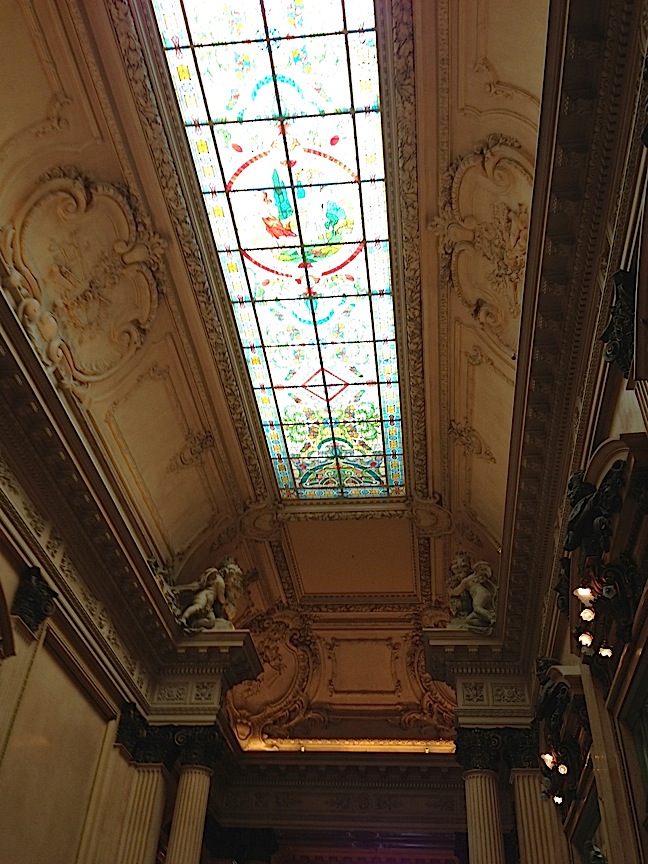
The city's
diverse museums run the gamut from the Museo Nacional de Aeronáutica de
Argentina to the
Automóvil Club Argentino; there is a Bernardino
Rivadavia Natural Sciences Museum, the Buenos
Aires Museum of Modern Art, the Faena Arts Center, Museo de Arte Hispanoamericano Isaac
Fernández Blanco, and even a Museum of Foreign Debt. And,
of course, there is a museum devoted to Argentina's
national dance--the Academia Nacional del Tango de la
República Argentina. The tango dates back
to the 1890s among the lower classes, but by the 1920s
it was all the rage on both side of the Atlantic, and
the city teems with tango clubs and places where you
can learn the dance. I once took a lesson and
became instantly enthralled with the sensuous movement
and relative ease with which I got started.
Refinement, however, is a lifetime commitment.
One of the best known clubs, with a show, is Esquina
Carlos Gardel, open since the 1940s, but you can
walk through San Telmo district and see tango dancers
right on the streets and plazas (left), some
dancing  for tips, others for the
sheer pleasure of it, as Al Pacino did in the 1992
movie "Scent of a Woman," as a blind man leading a
young woman across the dance floor of NYC's Plaza
Hotel.
for tips, others for the
sheer pleasure of it, as Al Pacino did in the 1992
movie "Scent of a Woman," as a blind man leading a
young woman across the dance floor of NYC's Plaza
Hotel.
BA's population takes full
advantage, at any hour of the day or night, at the
hundreds of cafés throughout the city, many of
them historic. The most famous is the Café
Tortoni, founded in 1858 by a Frenchman and
in its present location since 1880. The place bustles throughout the day, largely with
tourists who come mainly for the special coffees and
desserts, from a menu that is vast, serving everything
from steaks to seafood out of a dimly lighted, rather
grim back kitchen. You find a table, or stand at
the bar, order a postre
sweet, sip the coffee, and take in the atmosphere,
including walls hung with ancient photographs of the
kings and queens, actors and musicians who have been
coming here for more than a century and a half.
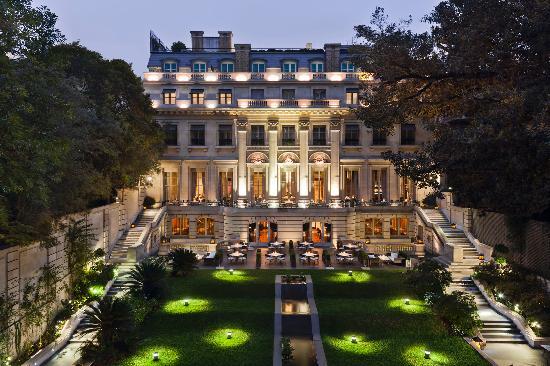 BA has a very
good selection of hotels in every price
category. At the high end, the Alvear Palace
is one of the most famous, oldest, and newly
renovated. The Faena
Hotel BA in the Puerto Maduro is one of the
newest, carved out of a grain depository. The Four Seasons
Hotel provides all the comforts and exceptional
service you'll find throughout that international
chain, and the new restauante
here, Elena, is one of the best new spots in town
(I'll be writing about it in next week's issue).
BA has a very
good selection of hotels in every price
category. At the high end, the Alvear Palace
is one of the most famous, oldest, and newly
renovated. The Faena
Hotel BA in the Puerto Maduro is one of the
newest, carved out of a grain depository. The Four Seasons
Hotel provides all the comforts and exceptional
service you'll find throughout that international
chain, and the new restauante
here, Elena, is one of the best new spots in town
(I'll be writing about it in next week's issue).
The new Palacio
Duhau-Park Hyatt (left), where I stayed on my last
visit, is stunning in its architecture, which is
thoroughly modern but has as its backdrop a true
Palacio. There is a pool and spa, as well as a fine
art gallery. One sour note when I arrived: my
bags took 45 minutes to reach me, despite several
phone calls to the front desk and, finally, the
manager's office. Even in a hotel of this
elegance, it's always a good idea to bring your own
carry-up luggage. Otherwise, I found the staff
throughout--all fluent in English--exceptionally
helpful throughout my stay. By the way, the
hotel even offers tango lesson.
Next Week: Where to Eat in Buenos
Aires.
❖❖❖
by John Mariani
Junoon
27 West 24th Street (near Fifth Avenue)
212-490-2100
junoonnyc.com
 Now two
years old, Junoon has had
deservedly good press, not least a Michelin star,
the only one awarded to an Indian restaurant in
NYC (London has three). The reasons are easy
enough to discern: owner Rajesh Bhardwaj set out to
show that Indian food need not be an array of
100 dishes with five sauces and to prove that
the cuisine can be as refined as any. It
would not be true, however, to say that Junoon
is NYC's first "upscale" Indian restaurant, for,
right along with the cherished, casual
storefronts in Murray Hill, the East
Village and Astoria, there have always been
finely decorated midtown restaurants like Dawat,
Chola, Bombay Palace, and Tulsi.
Now two
years old, Junoon has had
deservedly good press, not least a Michelin star,
the only one awarded to an Indian restaurant in
NYC (London has three). The reasons are easy
enough to discern: owner Rajesh Bhardwaj set out to
show that Indian food need not be an array of
100 dishes with five sauces and to prove that
the cuisine can be as refined as any. It
would not be true, however, to say that Junoon
is NYC's first "upscale" Indian restaurant, for,
right along with the cherished, casual
storefronts in Murray Hill, the East
Village and Astoria, there have always been
finely decorated midtown restaurants like Dawat,
Chola, Bombay Palace, and Tulsi.
Junoon does, however,
offer a larger, grander concept of modern
style--the name Junoon means "passion"--which
begins with a seductively lighted 50-seat
bar separated from the large dining room. The
lounge area has two antique jhoola
swings made from Burmese teak wood; the
façade has a wonderful basket weave of
black limestone; "Tree of Life" sculptures
line the entry to the main dining area,
where roomy booths and large dining tables
are set with good napery and fine
glassware. To the far wall is a brightly
lighted glassed-in kitchen. (I should note that
for some reason the seductively low
lighting of the dining room is lowered further
around nine o'clock, which makes it no more
seductive but actually decreases the pleasure in
seeing the color and beauty of the food
settings.)
Scott Carney's 750-label
wine list--with one Indian selection--would be
extraordinary in an haute cuisine French
restaurant, but in an Indian restaurant it is
unique. Whether ,all 750 of those wines
actually are a good match for the high spicings
in Indian food is a matter of taste, but we
enjoyed a Sancerre at $65 that had enough spice
and minerality of its own to go with our meal.
I'm not sure, though, that a Château
Cheval Blanc 2000 ($2500) or a Joseph Phelps
Insignia magnum 2008 ($800) on the list
meets Carney's criterion as a "supple, fruity
red."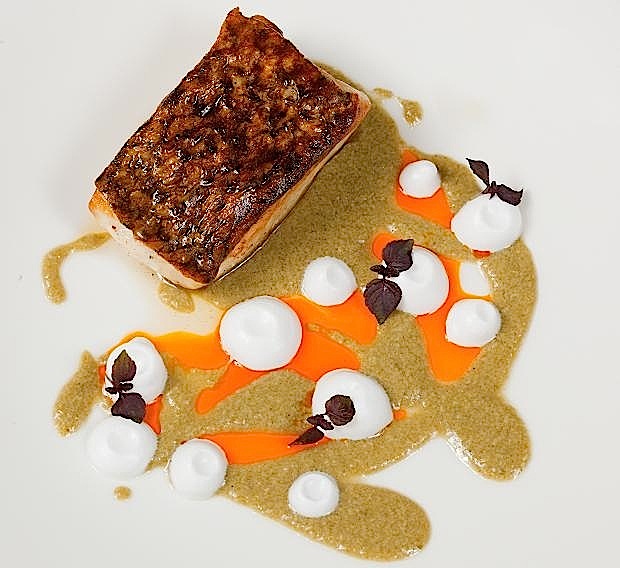
As
I did on my last visit, my wife and friends put
ourselves in the hands and imagination of
Executivehttp://www.youtube.com/watch?v=PvfRGnmVHN0e
Chef Vikas Khanna and Chef Aliya Lee Kong (below). They
had just begun the spring menu, which is offered
à la carte and as both a $75 and a $65
vegetable dinner.
I must report that on the night
I visited, midweek, the dining room was pretty
full by eight o'clock, but that could hardly have
been the cause for the distressing delays in
getting our food out of the kitchen. Since no
Indian bread nor
pappadum crisps are presented to the
table, we nursed cocktails and a bottle of wine
for 45 minutes before the appetizers arrived (and
not taking time to choose our meal).
Then it was another 45 minutes before a middle
course arrived, followed minutes later by the main
courses, and more wine. We kept on ordering
more bread--the garlic naan with prunes is
outstanding--just to keep our appetite at bay.
Whatever the mix-up was, it was never explained. I
like to assume it was an off night for service.
We began
with a shooter of pretty, light green
spiced spinach puree, then an array of appetizers
that included
lahsooni gobi, crispy soft-centered
cauliflower with chili flakes and a garlic tomato
chutney; delicious eggplant chaat with
yogurt, sweet-sour tamarind and red onion for
texture and sweetness; murg tikka hasnu, which
are tender chicken thighs with assertive garam masala
spices and the surprise of cheddar cheese, served
with a tomato-cucumber salad. The really
outstanding first course was salmon tikka, a dish
difficult to get right because the salmon--which
must be of the finest quality to begin with--can
so easily cook through and become dried out in the
fierce heat of the tandoor oven. Here, it
was a superbly rendered fine fish, juicy
throughout its flesh, served with greens. We
shared these appetizers, but portions were not
particularly generous.
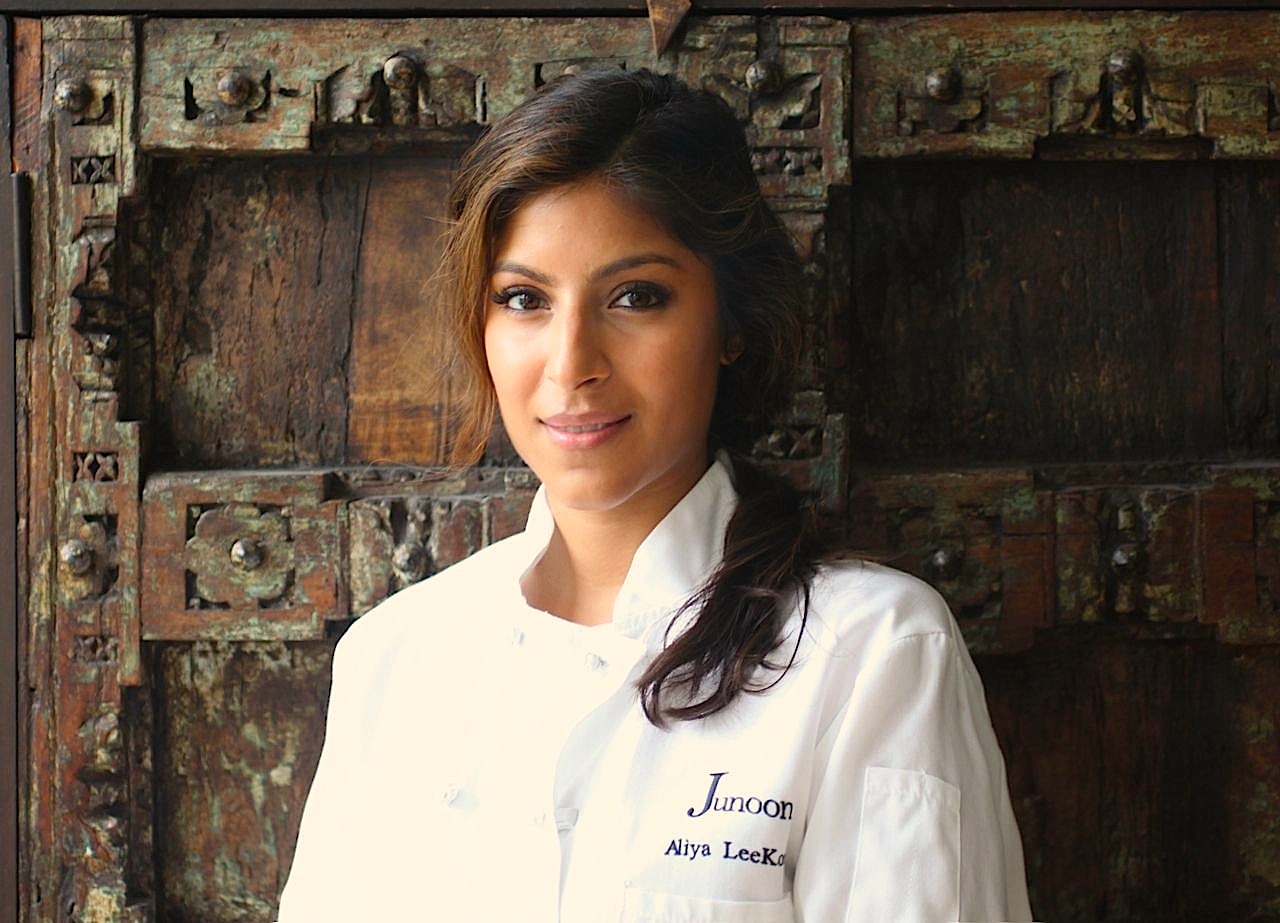 When our entrees
arrived, we hungry few leapt on them. Kari patta
shrimp (rather small in size) were cooked in the
tandoor with curry leaves, green chilies,
coriander and pickled vegetables. Excellent wild
striped bass malvan
(above),
a dish cooked on the cast iron tawa, was
simply done with a sauce of fresh coconut, green
chilies and kodampulli,
a dried smoked fruit. Another tawa dish, murg labadar,
was creamy chicken tikka simmered with cashews and
white poppy seeds. A handi
dish--basically a curry---was patiala shai
goat, slowly cooked but keeping all the
succulence, along with with green chilies in a
subtle, smoky peanut-tamarind sauce. Punjabi kadi
was a dish of chickpeas and vegetable pakoras
fritters with yogurt, dry red chili and garam masala. The food at Junoon
aims for subtlety, not mere heat, so if you
prefer the latter style, make sure you ask for
it.
When our entrees
arrived, we hungry few leapt on them. Kari patta
shrimp (rather small in size) were cooked in the
tandoor with curry leaves, green chilies,
coriander and pickled vegetables. Excellent wild
striped bass malvan
(above),
a dish cooked on the cast iron tawa, was
simply done with a sauce of fresh coconut, green
chilies and kodampulli,
a dried smoked fruit. Another tawa dish, murg labadar,
was creamy chicken tikka simmered with cashews and
white poppy seeds. A handi
dish--basically a curry---was patiala shai
goat, slowly cooked but keeping all the
succulence, along with with green chilies in a
subtle, smoky peanut-tamarind sauce. Punjabi kadi
was a dish of chickpeas and vegetable pakoras
fritters with yogurt, dry red chili and garam masala. The food at Junoon
aims for subtlety, not mere heat, so if you
prefer the latter style, make sure you ask for
it.
Pastry Chef Angie Lee goes
well beyond the clichés of Indian sweets
with desserts that might well find their way
onto a French or American dining table anywhere
in NYC: coconut rice pudding with
brûléed bananas, dates, a rum
hazelnut candied almonds and lovely ginger ice
cream; a spice chocolate cake with chocolate sable,
chocolate cream, white chocolate powder, and
nutty torrone
ice cream; best of all, a moist date
and fig cake with a salty caramel sauce,
clementines for a tangy edge, black sesame
crumble, and nougat cinnamon ice cream--a
perfect amalgam of flavors that bridges East and
West sweets.
In many respects that is the
signature of Junoon, keeping long, refined
culinary traditions alive in a modern style not
opposed to Western influence. It clicks
right into in a melting pot city like New
York.
Junoon is open for lunch and dinner
daily. Appetizers run $12-$15, main
courses $16-$38.
Rye
Coming Through as the Hot New Whiskey
by John Mariani

Rye grain
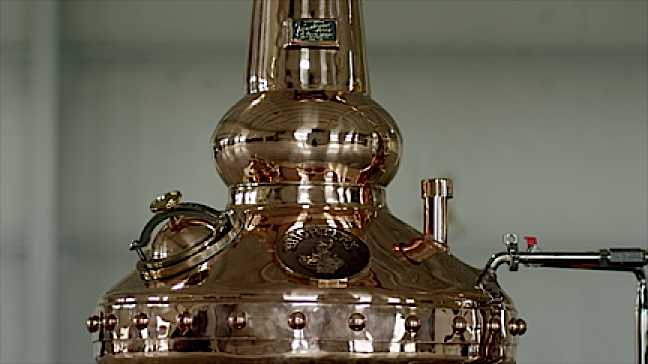 “When we
first came back on the market with our Michter’s
Rye in the 1990s, we were turned down by
distributors,” says Joseph J. Magliocco, President
of Michter’s Distillery LLC in Louisville, KY,
which had gone bankrupt in 1989. “Now, we’re
completely sold out of our 10 and 25 year old
ryes, and our Chinese importer tells us it’s
selling in Hong Kong bars for $150 per ounce!”
“When we
first came back on the market with our Michter’s
Rye in the 1990s, we were turned down by
distributors,” says Joseph J. Magliocco, President
of Michter’s Distillery LLC in Louisville, KY,
which had gone bankrupt in 1989. “Now, we’re
completely sold out of our 10 and 25 year old
ryes, and our Chinese importer tells us it’s
selling in Hong Kong bars for $150 per ounce!”
This new fame was a long time
coming. After Prohibition rye competed well enough
with bourbon, but by the late 1970s all “brown
goods,” including bourbon, Scotch, and brandy,
were in free fall, replaced by more popular “white
goods” like vodka and rum. “The word `rye’ on a
bottle was a negative for years,” says Magliocco.
But the renewed interest in
bourbon in the 1990s, with a flood of new small
batch and signature bourbons spilling into the
market, spurred others to try to fill a niche
market for smoother, small-batch, aged ryes, now
being made in Kentucky, New York, Pennsylvania,
California, Virginia, Illinois, and Indiana.
According to
Fred Minnick, a spirits expert who writes for Whiskey Advocate
and Whiskey magazine, “What
happened was that back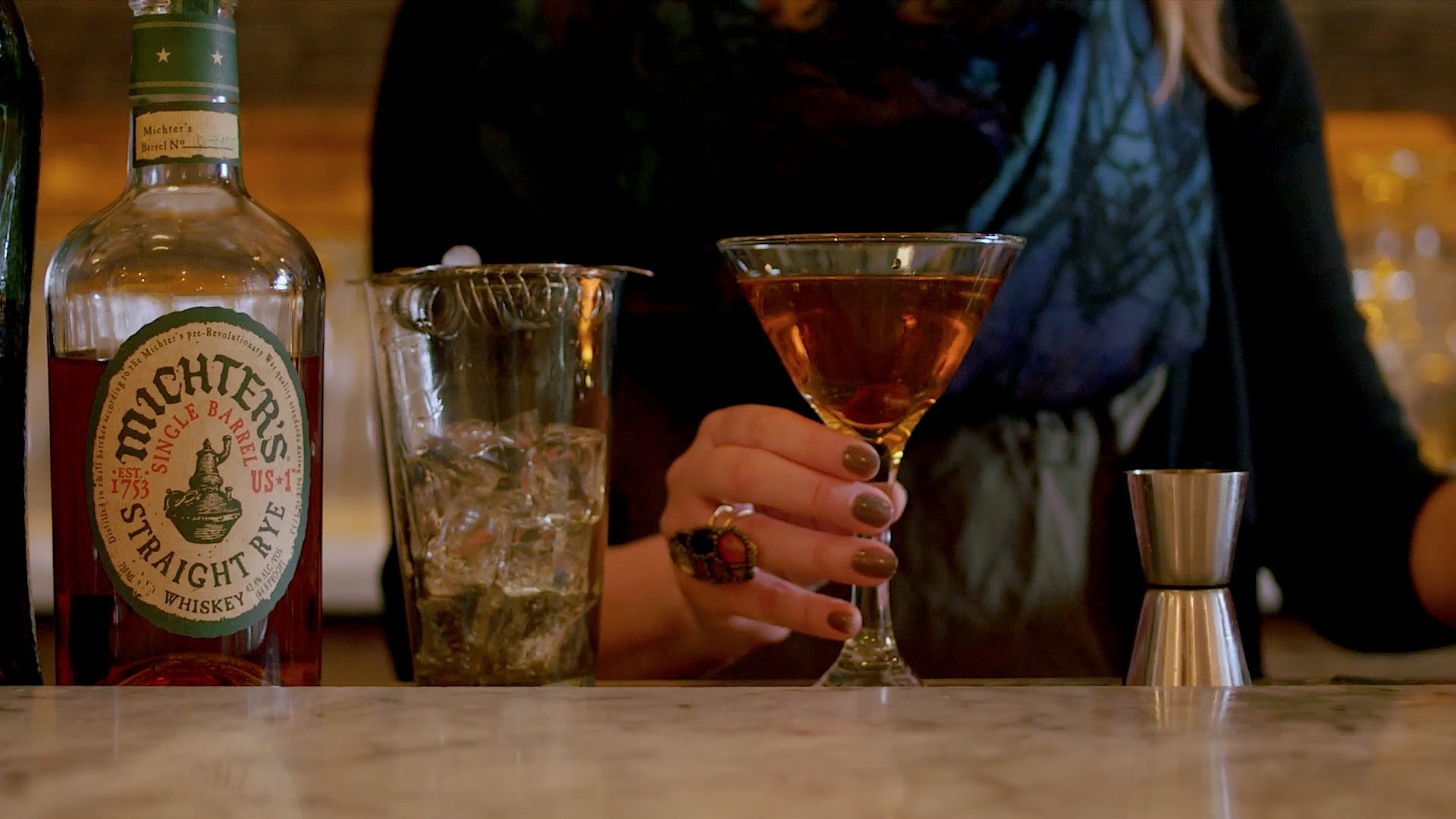 in 2000
Seagram folded their whiskey operations, and its Lawrenceburg, Indiana,
distillery was acquired by Pernod Ricard, which
announced it would close it in 2006. (CL Financial
purchased it but sold it five years later.) The
distillery had a couple thousand barrels of rye
whiskey leftover with nowhere to go. Then, small brands started
popping up, buying the Indiana juice. Bartenders
got hold of it and loved it for making whiskey
sours, old fashioneds, and Manhattans, because rye
is a good mixer. Then the Japanese and English,
who love American whiskies, started bringing cases
back with them on the plane, so now there’s
incredible interest in the international market
for rye. In fact, a lot of rye grain is now coming
out of Europe.”
in 2000
Seagram folded their whiskey operations, and its Lawrenceburg, Indiana,
distillery was acquired by Pernod Ricard, which
announced it would close it in 2006. (CL Financial
purchased it but sold it five years later.) The
distillery had a couple thousand barrels of rye
whiskey leftover with nowhere to go. Then, small brands started
popping up, buying the Indiana juice. Bartenders
got hold of it and loved it for making whiskey
sours, old fashioneds, and Manhattans, because rye
is a good mixer. Then the Japanese and English,
who love American whiskies, started bringing cases
back with them on the plane, so now there’s
incredible interest in the international market
for rye. In fact, a lot of rye grain is now coming
out of Europe.”
When the Sazerac label
introduced its “small batch” rye ten years ago, it
was “a real gamble,” according to Kris Comstock,
marketing director of Buffalo Trace. “Now there’s
such a proliferation of info through social media
and online that American whiskies are booming.
Sazerac piqued people’s curiosity, and we now
makes five different ryes, released annually and
extremely allocated. The interest feeds on
itself.”
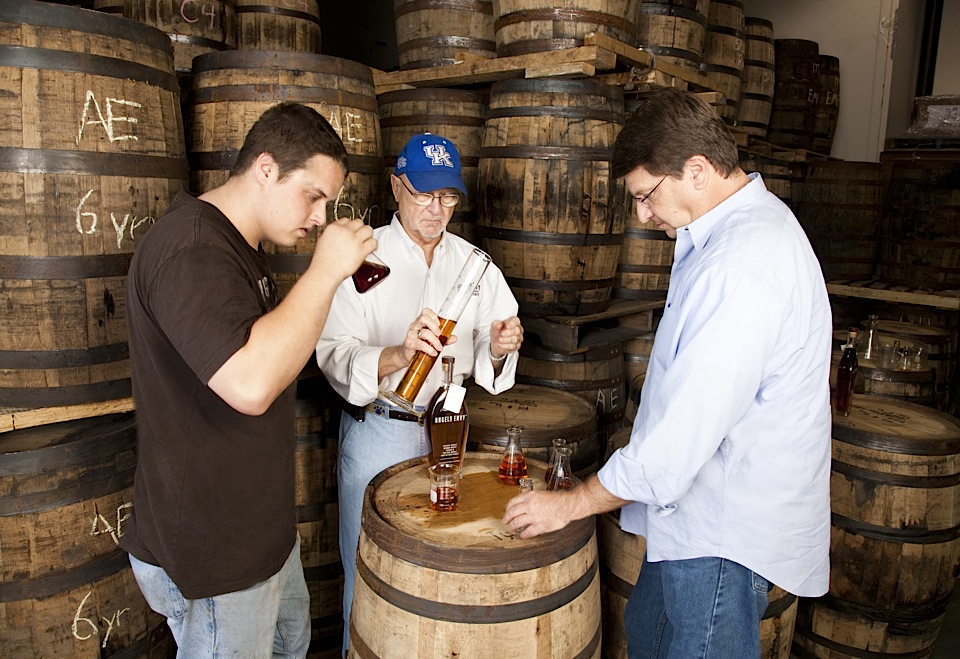 The
new ryes are largely distinguished by their barrel
finishing. Angel’s Envy, made by master distiller,
Lincoln Anderson, 74, with his son Wes, 47, and
grandson Kyle, 23 (left), is finished in Caribbean
rum whiskey casks. “We had to come up with cool
ideas,” says Lincoln. “So I tasted hundreds of
different rums, then sought out the barrels that
the ones I liked were aged in. So we take a 95%
rye whiskey and age it in those barrels. The
natural spiciness of rye collides in a beautiful
way with the molasses and rum flavors.” Angel's
Envy will be released this month and by 2014 will
be distributed in 27 states.
The
new ryes are largely distinguished by their barrel
finishing. Angel’s Envy, made by master distiller,
Lincoln Anderson, 74, with his son Wes, 47, and
grandson Kyle, 23 (left), is finished in Caribbean
rum whiskey casks. “We had to come up with cool
ideas,” says Lincoln. “So I tasted hundreds of
different rums, then sought out the barrels that
the ones I liked were aged in. So we take a 95%
rye whiskey and age it in those barrels. The
natural spiciness of rye collides in a beautiful
way with the molasses and rum flavors.” Angel's
Envy will be released this month and by 2014 will
be distributed in 27 states.
Wes Anderson explains Angel’s
Envy’s name: “The 20 to 30 percent of whiskey that
evaporates from the barrel into the air is called
the `angel’s share.’ But we don't let them have
all of it. They don’t deserve it, so we call it
Angel’s Envy.”
I tasted a wide array of
ryes—with a splash of water—and found them a far
cry from the raw, stinging stuff of the past. Here
are some of my favorites.
Redemption
($30)—a 92° proof beauty, made from 95
percent rye sourced from Indiana. The
nose bolts out of the glass before you even sniff
it. It’s very smooth, broadens on the palate, with
a mild finish but little bite.
Rittenhouse
100 proof Bottle in Bond Straight Rye
($24)—Though made in Kentucky, this is a
“Pennsylvania-style” rye named after David
Rittenhouse, first director of the U.S. Mint.
Despite its proof, this is a silky, creamy whiskey
with a seductive, slow burn. Not meant for
diluting in a cocktail.
Sazerac
Rye ($30)—One of five Sazerac ryes, this
90° proof crisp style has lots of
flavor components and hints of molasses and
cinnamon, and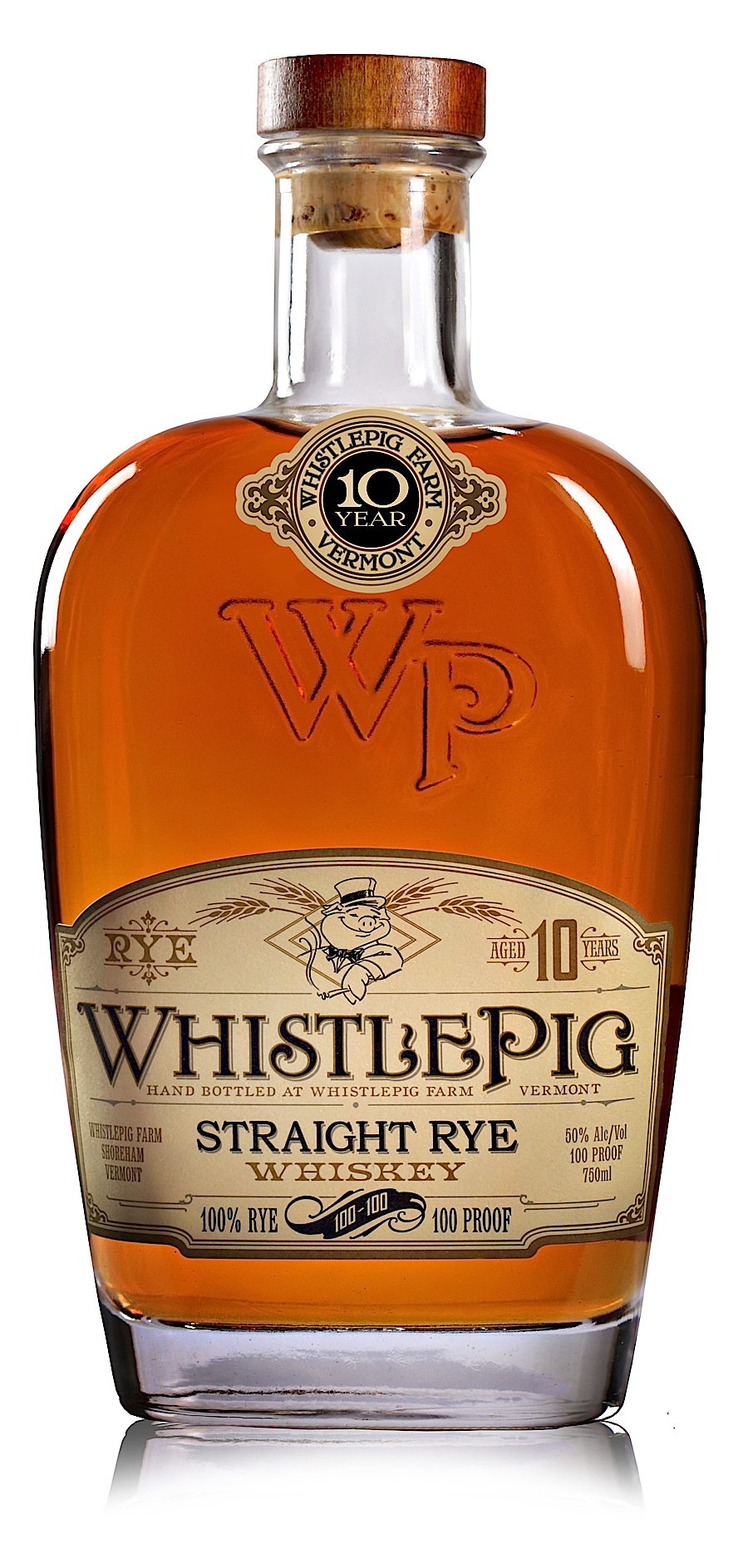 it goes
down very easily. An ideal base for rye cocktails.
it goes
down very easily. An ideal base for rye cocktails.
Colonel
E.H. Taylor, Jr. Straight Rye
($70)—Another Sazerac rye, it’s pricey but shows
off breeding through a mating of rye and malted
barley, so, while light in color, it has a briary
cut to it that may remind you of a single malt
Scotch.
Michter’s
10-Year-Old ($70)—Michter’s US 1
Straight Rye is impressive enough for its depth
and layers of true rye flavors, but the
10-Year-Old shows just how strikingly American
whiskey can compete with the finest Scotches and
Cognacs out there. You want complexity, a nip of
oak and smoke, this is well worth seeking out and
worth every penny it costs.
Knob
Creek Rye
($41)—Another blockbuster at 100° proof, this has plenty of spice
notes and gets vanilla from its charred oak
barrels.
WhistlePig
($70)—Aged ten years and 100° proof from 100 percent rye,
WhistlePig is currently made from Canadian rye
finished in bourbon barrels in Vermont, where the
producers hope to have their own distillery up and
running this summer. It’s got plenty of spice,
some anise and caramel, and it’s gaining favor and
distribution beyond the New England and the
Mid-Atlantic states.
Willett
4 Year Old Single Barrel Rare Release
($36)—Ready for a 110° proof rye? This is a
surprisingly very smooth whiskey indeed, with
little burn, and has a lush, sweet element to it.
The company has a Franco-American colonial history
and opened its distillery in 1935.
This article first appeared in Bloomberg
News.
❖❖❖
BUT THE NRA IS GIVING
HIM A MEDAL
 After Antonius Hart
Sr. and Antonius Hart Jr. got their order at
the drive-through window at
Jack Pirtle's Fried Chicken in
Memphis, TN, they realized "several pieces of
chicken were missing from their order," so
they returned top get the mistake fixed.
But Hart Sr. was still so upset by the
error that he pulled out an AK-47 rifle and
brandished it in front of the manager. Police
recovered the gun and 24 rounds of ammunition,
and the Harts were arrested.
After Antonius Hart
Sr. and Antonius Hart Jr. got their order at
the drive-through window at
Jack Pirtle's Fried Chicken in
Memphis, TN, they realized "several pieces of
chicken were missing from their order," so
they returned top get the mistake fixed.
But Hart Sr. was still so upset by the
error that he pulled out an AK-47 rifle and
brandished it in front of the manager. Police
recovered the gun and 24 rounds of ammunition,
and the Harts were arrested.
FOOD
WRITING 101: IT'S ONLY FOOD!
"The ME hotel
is a temple to self-love situated on a
roundabout between the
Delaunay and Somerset House. It is the first
temple to self-love that, to my knowledge,
comes disguised as a motorway feature —
and at the bottom of this
hotel-slash-roundabout
is a restaurant, STK, the weirdest, sluttiest,
muckiest, silliest, shiniest, stupidest,
tackiest,
gruntiest restaurant in all of Londons,
as an oligarch’s wife might say. It is so 2008
—
a place of lip gloss and Lenny Kravitz
furniture, of lilac uplighting and apricot
liqueur,
of truffles and man-shirts, of jewels,
sebum, sadness, drool and disco, and
absolutely
the gayest cocktails ever. For a good part of
a Wednesday night,
I think I am in Usher’s underpants."
--Camilla Long, "Table Talk," Sunday Times
Magazine.
❖❖❖
Any of John Mariani's
books below may be ordered from amazon.com.
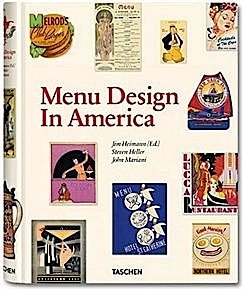 |
My latest book, which just won the prize for best book from International Gourmand, written with Jim Heimann and Steven Heller, Menu Design in America, 1850-1985 (Taschen Books), has just appeared, with nearly 1,000 beautiful, historic, hilarious, sometimes shocking menus dating back to before the Civil War and going through the Gilded Age, the Jazz Age, the Depression, the nightclub era of the 1930s and 1940s, the Space Age era, and the age when menus were a form of advertising in innovative explosions of color and modern design. The book is a chronicle of changing tastes and mores and says as much about America as about its food and drink.
“Luxuriating vicariously in the pleasures of this book. . . you can’t help but become hungry. . .for the food of course, but also for something more: the bygone days of our country’s splendidly rich and complex past. Epicureans of both good food and artful design will do well to make it their coffee table’s main course.”—Chip Kidd, Wall Street Journal.
“[The menus] reflect the amazing craftsmanship that many restaurants applied to their bills of fare, and suggest that today’s restaurateurs could learn a lot from their predecessors.”—Rebecca Marx, The Village Voice. |
"Eating Italian will never be the same after reading John Mariani's entertaining and savory gastronomical history of the cuisine of Italy and how it won over appetites worldwide. . . . This book is such a tasteful narrative that it will literally make you hungry for Italian food and arouse your appetite for gastronomical history."--Don Oldenburg, USA Today. "Italian
restaurants--some good, some glitzy--far
outnumber their French rivals. Many of
these establishments are zestfully described
in How Italian Food Conquered the World, an
entertaining and fact-filled chronicle by
food-and-wine correspondent John F.
Mariani."--Aram Bakshian Jr., Wall Street
Journal.
"Equal parts
history, sociology, gastronomy, and just
plain fun, How Italian Food Conquered the
World tells the captivating and delicious
story of the (let's face it) everybody's
favorite cuisine with clarity, verve and
more than one surprise."--Colman Andrews,
editorial director of The Daily
Meal.com. "A fantastic and fascinating
read, covering everything from the influence
of Venice's spice trade to the impact of
Italian immigrants in America and the
evolution of alta cucina. This book will
serve as a terrific resource to anyone
interested in the real story of Italian
food."--Mary Ann Esposito, host of PBS-TV's
Ciao
Italia. "John Mariani has written the
definitive history of how Italians won their
way into our hearts, minds, and
stomachs. It's a story of pleasure over
pomp and taste over technique."--Danny Meyer,
owner of NYC restaurants Union Square Cafe,
Gotham Bar & Grill, The Modern, and
Maialino.
|
 |
 |
 |
 |
 |
 |
 |
 |
 Everett Potter's Travel Report:
Everett Potter's Travel Report: 
 Eating Las Vegas
is the new on-line site for Virtual Gourmet
contributor John A. Curtas., who since 1995
has been commenting on the Las Vegas food
scene and reviewing restaurants for Nevada
Public Radio. He is also the
restaurant critic for KLAS TV, Channel 8 in
Las Vegas, and his past reviews can be
accessed at KNPR.org.
Click on the logo below to go directly to
his site.
Eating Las Vegas
is the new on-line site for Virtual Gourmet
contributor John A. Curtas., who since 1995
has been commenting on the Las Vegas food
scene and reviewing restaurants for Nevada
Public Radio. He is also the
restaurant critic for KLAS TV, Channel 8 in
Las Vegas, and his past reviews can be
accessed at KNPR.org.
Click on the logo below to go directly to
his site.

Tennis Resorts Online: A Critical Guide to the World's Best Tennis Resorts and Tennis Camps, published by ROGER COX, who has spent more than two decades writing about tennis travel, including a 17-year stretch for Tennis magazine. He has also written for Arthur Frommer's Budget Travel, New York Magazine, Travel & Leisure, Esquire, Money, USTA Magazine, Men's Journal, and The Robb Report. He has authored two books-The World's Best Tennis Vacations (Stephen Greene Press/Viking Penguin, 1990) and The Best Places to Stay in the Rockies (Houghton Mifflin, 1992 & 1994), and the Melbourne (Australia) chapter to the Wall Street Journal Business Guide to Cities of the Pacific Rim (Fodor's Travel Guides, 1991).


MARIANI'S VIRTUAL GOURMET
NEWSLETTER is published weekly. Editor/Publisher: John
Mariani.
Contributing Writers: Christopher Mariani, Robert Mariani,
John A. Curtas, Edward Brivio, Mort Hochstein,
Suzanne Wright, and Brian Freedman. Contributing
Photographers: Galina Stepanoff-Dargery,
Bobby Pirillo. Technical Advisor: Gerry McLoughlin.
© copyright John Mariani 2013
